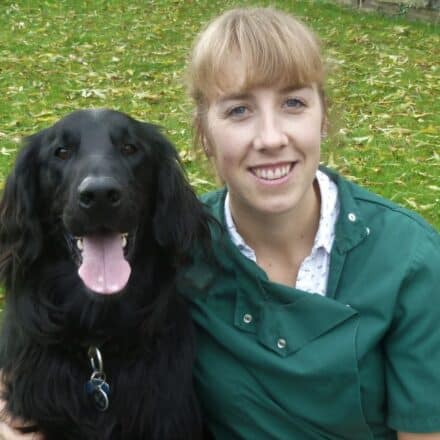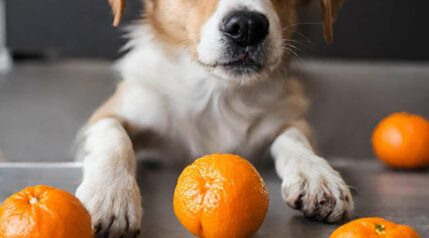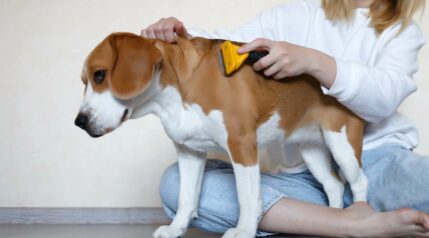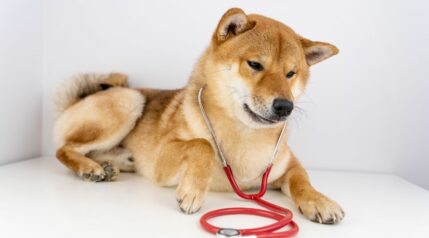A sago palm isn’t actually a palm tree but a low-growing plant known as a cycad. These tropical plants are native to warm parts of Japan and China, with many people keeping them as houseplants in the US. It can also be found outdoors in other warm climates, including USDA zones 9 to 11, like Florida, Texas, Arizona, and California.
The plant has long, tough, green, spikey leaves which grow out of a short trunk. This plant is very slow-growing and may only reach 2 or 3 feet after several years. Unfortunately, this means they are often the perfect height for your pet to have a nibble on.
But is the plant a danger to your dog if they eat it? Let’s learn what signs and symptoms to look for and how to treat a dog who has recently digested this palmy, poisonous plant.
Is Sago Palm Toxic To Dogs? What Parts Are Poisonous To Dogs?

While there are many poisonous plants for dogs, the ASPCA lists the sago palm as being among the most toxic to dogs, cats, and horses. This type of palm contains cycasin which can cause liver failure and is thought to be the plant’s primary toxic mechanism. According to the pet poison helpline, all parts of the sago plant are toxic, but seeds (nuts) are the most concentrated and dangerous.
What Happens If A Dog Eats A Sago Palm?
If your dog eats it, he could develop the following symptoms –
- Drooling
- Vomiting
- Diarrhea
- Inappetence
- Weakness
- Seizures
- Lethargy
- Abdominal pain
- Fluid in the abdomen
- Jaundice
- Death
Initial symptoms can start within 15 mins to several hours after your dog eats the plant. They usually develop gastrointestinal upset first with drooling, vomiting, and diarrhea.
Symptoms then progress over a couple of days, with animals developing central nervous system problem signs. Your dog may start tremoring, twitching, and even seizures, with liver failure very common. Your dog may start to have blood clotting issues and show signs of internal bleeding, generally noticed in dark sticky tar-like stools (melena).
My Dog Ate A Sago Palm. What Should I Do?
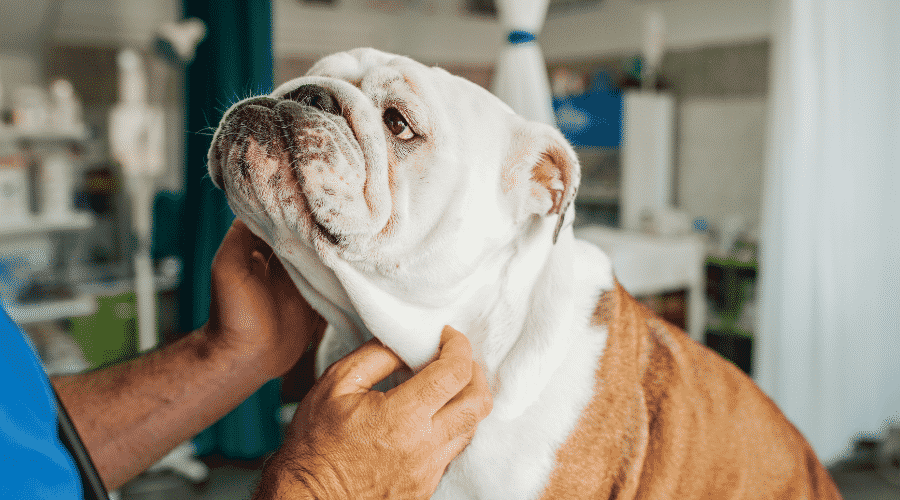
- Remove your dog from the area to stop them from eating more.
- Try and limit the amount your dog eats by removing them from the area as soon as possible. Clean up any shredded plants to stop him from coming back to eat more. Try and establish how much of the plant he may have consumed so you can tell your vet.
- Check to see if your dog is okay. The onset of symptoms can be variable, and some dogs can develop acute stomach upset and start drooling and vomiting within 15 minutes of eating the plant. Others may take a few hours before they show problems.
- Contact your vet right away! Even if your dog seems okay and is currently asymptomatic, you must call your vet. Prompt treatment gives your dog the best possible chance of survival, so don’t waste time and contact your local veterinary hospital.
- Follow your veterinarian’s advice. If your vet tells you to come into the clinic, then make sure you do so as quickly as possible. Follow their advice regarding treatment plans, as it could save your dog’s life.
Sago Palm Poisoning In Dogs: Treatment
Sadly there is no specific antidote or cure for consumption in dogs. Any treatment provided is usually aimed at relieving your dog’s symptoms and trying to stop further damage from occurring through decontamination.
The veterinarian will examine your dog’s mental status, heart rate, and abdomen for bloating and discomfort, amongst other things.
They may advise running additional tests, such as a blood panel to check their hematology for signs of infection or anemia and biochemistry to assess their liver, kidneys, and blood sugar. This blood work may be repeated over the coming days, in particular, to keep an eye on your dog’s liver parameters. If these are increasing, it could indicate damage is occurring.
Your vet may be able to give your dog an emetic which is a medication that makes them vomit. This is only effective if your dog visits the vet within an hour or two of having eaten the plants, so hence it is important to get your dog to your vet immediately. If the induction of vomiting is unsuccessful or your vet has concerns about any plant material remaining in your dog’s stomach, then they could recommend a gastric lavage. This involves anesthetizing your pet so that they can flush the stomach out with copious amounts of sterile saline to remove any bits of the plant.
Your dog will usually be hospitalized to receive intravenous fluid therapy, which helps maintain his hydration status and blood pressure, as well as support his liver. If your dog is having seizures or problems with blood clotting, he may require medications to counteract these.
Despite your vets’ best efforts, some dogs still die from sago palm poisoning. It’s been estimated that around half of dogs either pass away or need to be euthanized on welfare grounds if aggressive treatment is unsuccessful.
Why Is My Dog Eating My House Plants?

A lack of mental stimulation could cause dogs to show destructive behaviors as a way of alleviating their boredom or perhaps as a way of seeking your attention (albeit negative attention). This could result in them pulling out and chewing at your possessions, including your house plants. Some dogs also destroy household items due to separation anxiety.
Young dogs and puppies are usually just curious and explore the world through their mouths, resulting in chewing and eating things that they shouldn’t.
Try increasing your dog’s exercise regime to help keep them physically fit and mentally stimulated. Exercise is a good way of burning off energy, but just going out and giving them a change of scenery with new smells and sights is important. Giving your pet lots of good quality attention can be helpful, too, through grooming and play. Brain games can also be helpful to ramp up healthy mental fatigue.
Certain medical conditions can cause dogs to eat non-food items. Pica is where dogs eat non-food items, which could be plants or other items like soil, bedding, stones, etc. Ensure your dog is on a high-quality, complete-balanced pet food diet to ensure there are no underlying nutritional deficiencies.
Speak to your veterinarian, especially if your dog is showing any other abnormal symptoms. Polyphagia, or a general increase in appetite, can be seen with a variety of medical disorders. This can drive your pet to eat everything and anything! Your vet will examine your dog and discuss whether further tests are required.
How Do I Stop My Dog From Eating My Plants?

If your dog generally shows an unhealthy interest in your plants, you should try and discourage this. Remove any toxic plants from your home to stop accidents while you implement training methods. This is particularly important if you have an inquisitive puppy that enjoys chewing things.
Training your dog to stay away from your plants is a good way of preventing problems. Using positive reinforcement, such as clicker training, work on his recall such that if he is approaching your plants, you can call him away from them again with ease.
Some dogs will destroy possessions when you are out of the house, which could be a symptom of separation anxiety. Calming pheromones may be useful and can be purchased to help support your pet’s anxiety. You can also work to train your dog to feel comfortable with being left for short periods at a time initially before building this up. A behaviorist or dog trainer may be able to assist you if you are struggling with your dog’s behavior.
Increasing your dog’s exercise and providing toys and games to improve their mental stimulation can also help reduce destructive behaviors. A tired dog is a happy and less destructive dog.
Frequently Asked Questions
Is Sago Palm Tree Poisonous To Dogs?
Yes, the tree is extremely poisonous to dogs. You must seek veterinary attention if your dog eats any part of this plant. Even with prompt and aggressive treatment, about half of dogs will die after eating sago palm, according to the Pet Poison Helpline.
What Should I Do If My Dog Ate Sago Palm?
If you suspect your dog has eaten any, contact your local veterinary hospital right away. Follow your vet’s advice regarding treatment, as it will give your dog the best chance of survival, even if your dog currently seems okay. Symptoms can take a few hours to days to fully establish.
How Many Sago Palm Seeds Will Kill A Dog?
All parts of the plant are toxic to dogs, but the seeds are particularly concentrated. One or two seeds could be enough to be fatal in a medium-sized dog. If your dog eats any seeds at all, it’s always best to get them checked out by a vet as soon as possible.
Final Thoughts
Sago palms are extremely toxic to dogs, so you should discourage your dog from eating them and, ideally, not keep them in the house at all if you have pets. If your dog has accidentally eaten one or part of these plants, then you should contact your vet immediately for advice and treatment.
If your pet is showing an unhealthy interest in plants, you should look to improve their mental stimulation and implement a training regime to work on their behavior and avoid dangerous accidents from happening.
